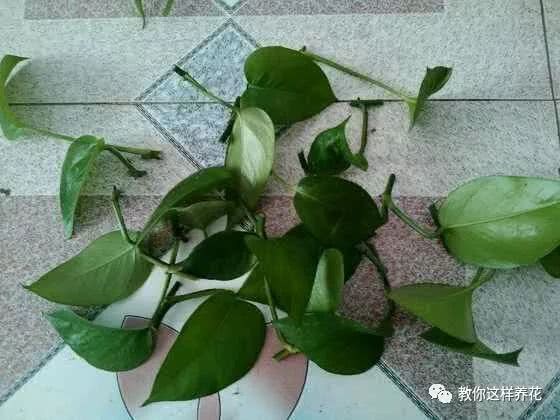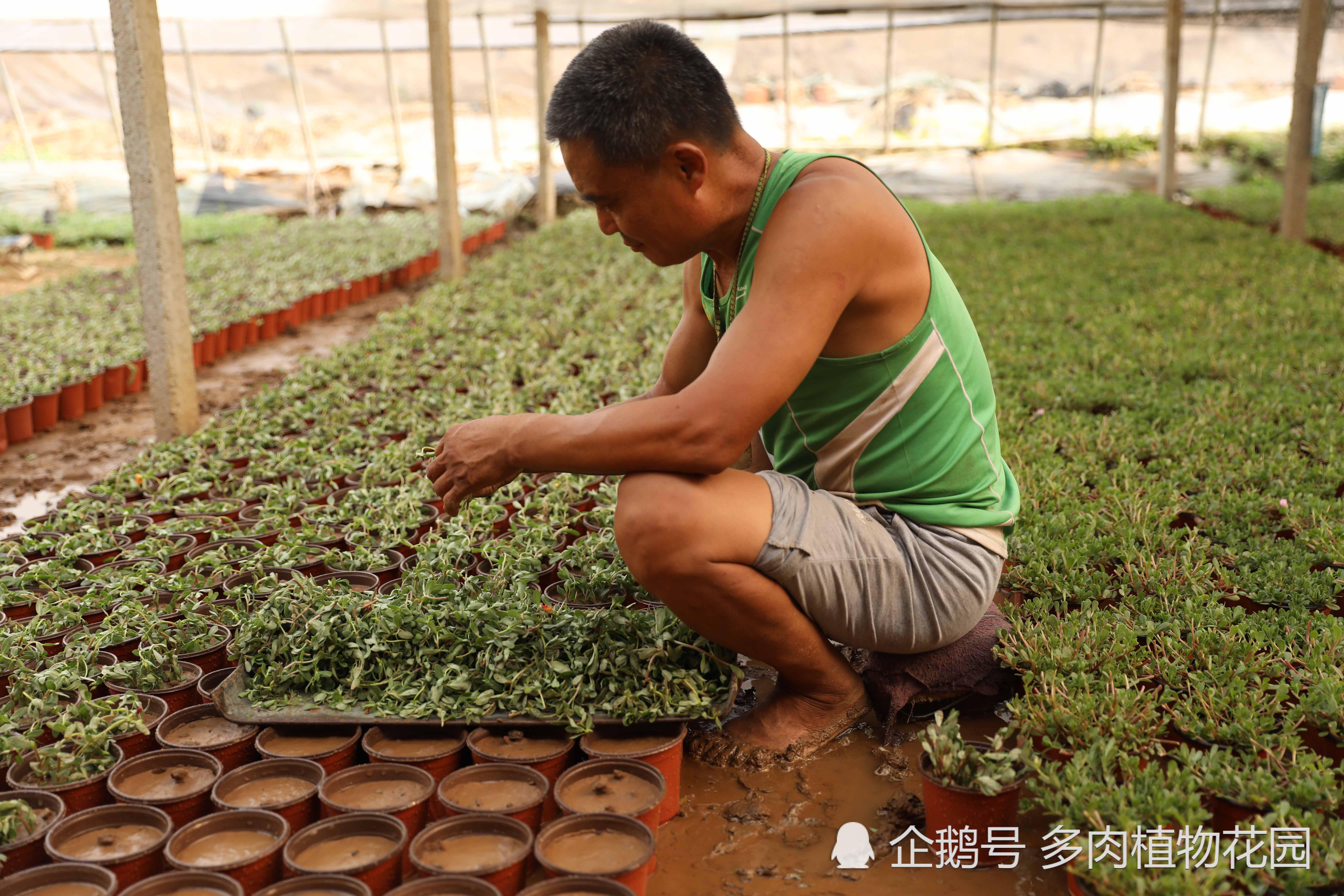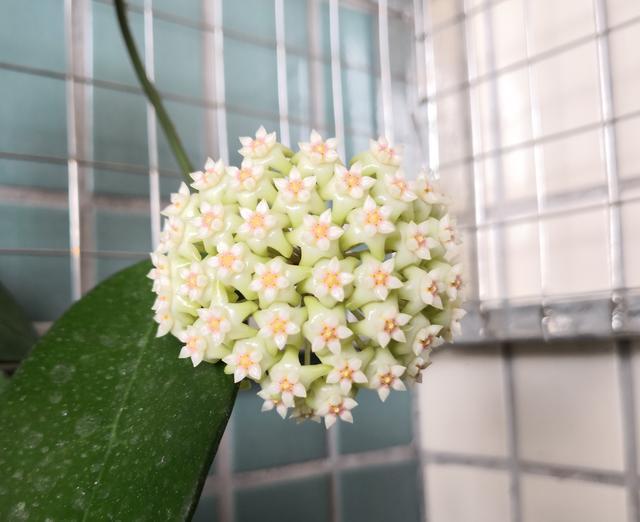In the next month, it will be too late to cut these 25 kinds of flowers.

Now the temperature is suitable, it will be a little cold later, and the cuttings will take root more slowly. Generally speaking, the suitable cutting temperature is 20-25 ℃. At present, the temperature is cool in most places, which is a good time for cutting. Here are some common cutting methods of flowers and plants, if there are branches around, quickly cut it up, 1 pot into 10 pots, but also how to spend money oh!
"
Flower cuttage
"
-Green pineapple-
Green pineapple cuttings take root quickly, and a branch can be cut into many pots. Whether soil insertion or water insertion is very simple. Cut off the green radish branches about 10cm, retain 1-2 leaves, to have a bud point, aerial root is the best. Insert it into the loose basin soil, pour it thoroughly, and wait for it to take root.
It can also be put into a water bottle for hydroponic culture, and it will soon take root.
-hanging orchid-
The cuttage of the orchid is very simple, the small orchid growing out, cut it off and put it on the basin soil, do not bury it very deep, but easy to break your heart.
Can also be put directly in the water bottle, it is easy to take root and survive.
-Douban Green-
Cut off the green branches or leaves of Douban, tilt 45 °and insert them into vermiculite to keep the basin soil moist and take root in about 2 weeks.
-succulent leaf insert-
Choose healthy succulent leaves, do not use water, dead leaves. Succulent leaves can be cut off for 4-5 days, so succulent leaves will be easier to break off. Do not pull the leaves bluntly, pay attention to the integrity of the growth point. Damaged leaves are difficult to sprout in long roots, so we should pay attention to them in the process of breaking.
(complete bud point)
(torn bud point)
Flat on the soil, watering attention can not be poured on the succulent surface, can be poured in the leaves seam. If there is water on the leaves, it can be dried with a paper towel. Put it in a cool environment without direct sunlight and wait for it to take root.
-longevity flowers-
The cutting of longevity flowers is also relatively simple, choose some more mature fleshy stems and dry them. Insert it in plain sand or nutritious soil, water it and put it in a semi-shady place at a temperature of 15-20 ℃. It can take root in about 3 weeks. Some fallen leaves can also take root and sprout in the soil, and small buds can grow from the petiole.
(longevity Flower Bar Meng Siyuan)
-Ivy-
Cut off the ivy branch 10cm or so, with air root is the best, cut off the bottom leaves, inserted into the loose and breathable basin soil, placed in a semi-shady place to maintain, pour water, generally 20-30 days after insertion can take root and survive.
-Camellia-
Generally choose healthy and full semi-mature branches of the same year as cuttings, 8 cm long and 10 cm long, leaving 2 leaves at the apex. When cutting, the base takes a little old branch as far as possible, it is easy to form callus after insertion, and the root is fast. To cut along with the cutting, insert about 3 cm into the substrate, the leaves are required to hand over each other when cutting, and press with your fingers after cutting. It is better to insert it shallowly, so that it can heal and take root quickly.
The matrix generally uses plain sand or perlite. Attention should be paid to exposure and disinfection before use, or hot water should be used for disinfection.
The inserting bed should be shaded and covered with film, spray the leaf surface every day, keep it moist, and keep the temperature at 20-25 ℃. When cutting, the rooting powder was dipped in the base of the cuttings for 2-5 seconds, which had an obvious effect on promoting rooting.
It began to heal about 3 weeks after insertion and took root after 6 weeks. Transplant into a pot when the root is 3-4 cm long.
(Chinese Camellia Bar Huang Jinzhai)
-Tiger tail orchid-
Cuttings choose strong and thick leaves, cut to a length of about 5-6 cm, cut flat when cutting, do not cut obliquely or bent.
After cutting, do not worry about cutting, put it in a cool place to dry, the wound can be dried before cutting can avoid rotting roots.
Insert the dried cuttings into the sand or vermiculite to expose the soil surface so as to keep the soil moist and take root in a month or so.
-crab claw orchid-
Choose the strong crab claw orchid with thick leaves as the material, take 1-2 mature stem nodes and dry them. The basin soil chooses the soil which is breathable, good drainage and rich in nutrition. You can add some pearl salt or vermiculite to it.
Insert the prepared cuttings into the basin soil and wait for the basin soil to dry before watering it. It will take root in about 1-2 weeks.
-Lingxiaohua-
The end of autumn and the beginning of winter are very suitable for soil cutting, and the survival rate of cutting propagation is very high. Select the sturdy branches of Lingxiao flower, which have been growing for more than two years, and cut them into cuttings 10-15 cm long. Note that the upper cut should be cut flat, and the lower cut should be cut oblique.
After cutting, do not worry about cutting, in a cool and ventilated place to dry for half a day or so, and then the cutting effect will be better. When the cuttings are ready, the cuttings can be cut at a depth of about 1 per cent of its length, keeping the soil moist and rooting in about 20 days.
-hydrangea-
Choose sturdy branches, pruning branches to leave only one node, leaves should also be removed half, to prevent water loss too fast. Cut flat at the upper cut and oblique at the lower cut.
Pour the prepared basin soil thoroughly and disinfect the cuttings with fungicides. Insert the part below the node into the soil, then put the flowerpot into the tray and add the right amount of water to the tray so that the water will go up the soil and the soil will remain moist all the time.
-triangular plum-
Select the vigorous and sturdy branches from the triangular plum plant as cuttings, generally woody (feel very hard, not soft and) branches, so that the germination rate is higher, but also easy to survive.
After selecting the branches, cut them into cuttings about 15-20 cm long, cutting flat at the top and oblique at the bottom. First punch holes in the basin soil with chopsticks, and then insert the prepared cuttings, about 4-6 cm deep, and take root in about 30 days.
-mint-
The cutting of peppermint is relatively simple, cut off the slightly older branches of about 10 centimeters, cut off the leaves at the bottom, and grow roots in the water for a few days, or directly into the loose soil, first in a cool place for maintenance, and then normal maintenance after a week.
-Rose-
Cutting rose branches, generally leave 3 bud points, 2 leaflets can be, the lower end is cut into a slope, the upper end is cut flat, and the first bud point can be left 1cm.
The cutting medium can be vermiculite, not too fine, medium particles are best.
Vermiculite is placed in a plastic cup, with a few small holes in the bottom, put the plastic cup in a tray, add water, and put it in a place with some light. when there is no water in the tray, add water and wait for it to take root.
-Gardenia-
Gardenia cutting is also relatively simple, the annual May-June selection of semi-lignified, fully developed twigs, cut into 10-15 cm long, leaving two leaves. The bottom was soaked with rooting powder, and the cuttings were cut in acid soil with strong water and fertility conservation. It could take root about 1 month after cutting and transplant after 50 days.
-Rieger Begonia-
At the end of autumn and the beginning of winter, the cut new branches can be used as cuttings when pruning and shaping the plants. Rieger begonia can be cut into branches or leaves. When inserting a branch, the length of the branch should be moderate, and the lower part of the branch should be cut into a horseshoe shape with a blade; when inserting leaves, six mature leaves with exuberant growth should be selected, and the lower end of the petiole should be obliquely cut with a blade. Water can also be inserted into the root, and then inserted into the medium to survive. The medium can be perlite, vermiculite or plain sand. After survival, adventitious buds can grow from under the petiole, and gradually unearthed.
-Fugui bamboo-
Rich bamboo takes root quickly when the temperature is high. Cuttings should be cut obliquely, which can increase the water absorption area and speed up the rooting of rich bamboo. Cut off the leaves in the bottle to prevent long-term airtight rot from affecting plant growth.
The water level is generally controlled at about 3-4 knots above the incision, about 1x3 water. If it is tap water, it is better to put it for one day before using it.
Put it in a cool place with scattered light, do not bask in the sun. Do not move the position, change the water every 2-3 days, usually grow new roots in about 20 days, and apply a small amount of nutrient solution after growing new roots. During this period, there may be some lethargic, yellow leaf phenomenon, which is taking root and adapting to the new environment, is normal, can reduce the bottom of the yellow leaf a little bit.
-Rubber tree-
The cutting basin soil can use plain sandy soil or vermiculite, and the middle branch of two-year-old semi-lignified cuttings should be selected, and the survival rate can reach more than 90%. In order to prevent the flow of too much milk from the cutting mouth and affect the survival, the village should be sealed with plaster or plant ash immediately after cutting. The length of cuttings is based on the retention of three buds, cut off the lower leaf, close the upper two leaves, and tie them with thin plastic rope to reduce leaf evaporation.
The suitable temperature for rooting is 18-25 ℃, water is often sprinkled to the ground to increase air humidity, shading and ventilation are done, it can take root in about 2-3 weeks, put in a slightly shaded place after pot planting, and then gradually increase the light after the new buds germinate.
(rubber Tree Bar listens to ing blossoms)
-Honeysuckle-
Honeysuckle is easy to grow, does not have high requirements for soil environment, and takes root quickly. The propagation is mainly cuttage, which can be cut in the rest of winter.
Select the sturdy branches of the year, leaving 2-3 nodes for each cutting branch, leaving only two leaves of the upper section, and cut off the other leaves. Cut the branches obliquely into the soil, the depth of the branches can be 1 prime 2, and slightly press to bear fruit. Pour water after insertion, keep the soil moist, put it in a place with bright ventilation and light, and it can take root after about half a month.
(green grass of Sina blog)
-Banyan tree-
The banyan tree is a plant that takes root quickly and can be cut to survive in spring, summer and autumn. Cut 1-2-year-old branches, cut them into about 10 cm length, each section includes 3-4 nodes, remove the lower leaf, leaving only the upper leaf, when the leaf is larger, it can be tied into a tube with string.
The cuttings are inserted into the soil about 1par 3. After cutting, the cuttings are covered with plastic film to keep moisture (not covered with plastic film when the temperature is high). After 30-45 days, they take root and sprout. After rooting, they can be planted in pots.
(flower bar SDWFCYWZ123)
-Jasmine-
Jasmine cuttage can be carried out from April to October, select mature one-year-old branches, cut into cuttings with more than two nodes, remove the lower leaves, insert them in the bed with half of the sediment, cover with plastic film, maintain high air humidity, and take root in about 40-60 days.
The cuttings have 3 sections, and the lower cut 0.5 cm away from the leaf node is the best, which is easy to take root. To reduce evaporation, leave 2 leaves in the whole strip and cut off half of them.
It basically took root in about 21 days, and was watered thoroughly after transplanting.
(the above picture of jasmine is from Ailan of Ta Hua Xing's life.)
-paulownia paniculata-
Paulownia can be propagated by leaf insertion. When the flower lags behind, the leaves of robust plants are selected, leaving petiole 1 cm, oblique 45 degrees and inserted into clean river sand, vermiculite or perlite. The 1 blade 3 of the leaf surface is inserted into the river sand, and the 2 canopy 3 stays on the ground surface, properly shading and maintaining a certain humidity. At the temperature of about 22 ℃, the leaves can take root in 15 days, and then the seedlings are transplanted into small pots.
-rhododendron-
The cutting time of rhododendron is the best in spring (May) and autumn (October), when the temperature is between 20-25 ℃, which is the most suitable for cutting. When cutting, select the semi-lignified shoots of the same year as cuttings, cut 6-10 cm with nodes, cut smoothly and neatly, cut off the lower leaves, leaving only 3-4 leaflets at the top. The depth of the insert is 3-4 cm. After plugging in, water thoroughly once. Cover it with a plastic bag, tie the mouth of the bag with a belt, open it when you need to water it, and re-tie it after pouring.
Placed in a sunless place, the basin soil should be sprayed with water once a day to keep it moist. After 10 days, it can be sprayed once in 2-3 days. It usually takes about 2 months to take root.
-African violets-
African violets can cut off the old leaves and insert them after flowering, leaving the petiole about 2 cm. Dry slightly, insert river sand or vermiculite, cover with plastic bag or plastic wrap to increase humidity, take root in about 20 days, grow seedlings in 1 month, and move pots in 2 months.
Flower friends who want to breed should hurry up!
Show it to the flower friends who need it!
- Prev

As long as there is the sun, the flower can be divided into several pots.
Welcome to follow the succulent plant garden, taste the most beautiful succulent plants, learn the most complete knowledge of succulent conservation, and see the most authentic florist video. ...
- Next

The most fragrant potted flower blossoms a room full of fragrance, beautiful and easy to grow in autumn.
Guide green potted plants is a necessary embellishment of home life, raising some flowers and plants at home, many benefits, not only can beautify the room, but also happy mood. Huasheng potted Plant Diary No. 1369 takes you to know a super fragrant flower. Lord of the day.
Related
- Wuhan Hospital Iron Tree Blooming Result Was Instantly Frightened by the Gardener Master
- Which variety of camellia is the most fragrant and best? Which one do you like best?
- What is the small blue coat, the breeding methods and matters needing attention of the succulent plant
- Dormancy time and maintenance management of succulent plants during dormancy
- Minas succulent how to raise, Minas succulent plant pictures
- What are the varieties of winter succulent plants
- How to raise succulent plants in twelve rolls? let's take a look at some experience of breeding twelve rolls.
- Attention should be paid to water control for succulent plants during dormant period (winter and summer)
- Watering experience of twelve rolls of succulent plants
- Techniques for fertilizing succulent plants. An article will let you know how to fertilize succulent plants.

